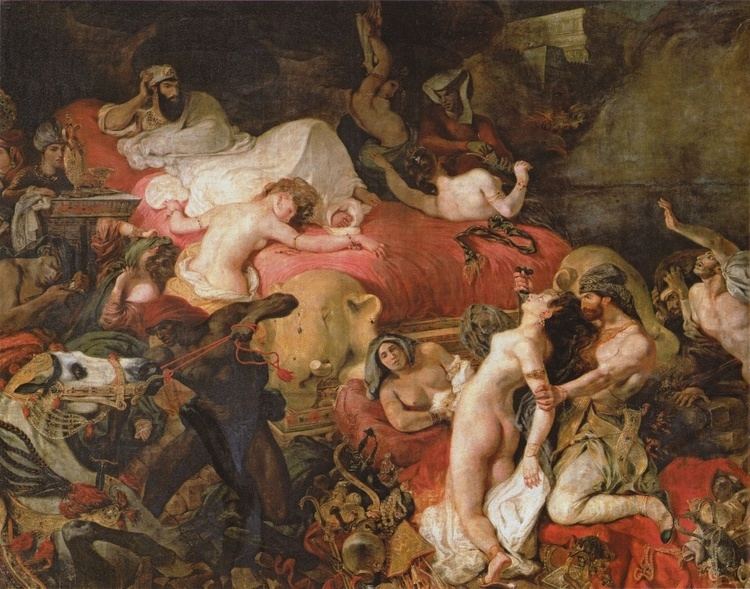Composer Franz Liszt | ||
 | ||
Similar Don Sanche, Siegfried, Tannhäuser, The Noblewoman Vera Shel, Mlada | ||
Sardanapale (French for Sardanapalus), S.687, is an unfinished opera by Franz Liszt based loosely on the 1821 verse play Sardanapalus by Lord Byron.
Contents
Background
Liszt was motivated to write a large scale opera at least partly in an attempt to be recognised as more than a travelling keyboard virtuoso. (His early one-act opera, Don Sanche, could hardly qualify to raise his status.) Originally he intended to write an opera based on Byron's The Corsair, and even obtained in 1844 a libretto by Alexandre Dumas. Eventually in 1845 he settled on the subject of Sardanapalus. At this time Liszt was working at the court in Weimar, but may have had his eyes on opportunities at the Hoftheater, Vienna, where the Kapellmeister, Gaetano Donizetti, was seriously ill (although he did not in fact die until 1848). A large-scale opera could have placed Liszt in the running for Donizetti's influential post, as he wrote in an 1846 letter to the Comtesse d'Agoult. In correspondence with his close associate the Princess Belgiojoso, Liszt planned to have the opera performed in Milan in 1846-7.
Sardanapalus was, according to the writer Ctesias, the last king of Assyria. Some have identified him with Assurbanipal, but the Sardanapalus of Ctesias, "an effeminate debauchee, sunk in luxury and sloth, who at the last was driven to take up arms, and, after a prolonged but ineffectual resistance, avoided capture by suicide" is not an identifiable historical character. Ctesias's tale (the original is lost) was preserved by Diodorus Siculus, and it is on this account that Byron based his play.
Liszt had been present at the 1830 premiere of the oratorio 'The Death of Sardanapalus' by Hector Berlioz, which featured an immolation scene as shown in Eugène Delacroix's sensational 1828 painting of the subject (illustration). These influences probably led Liszt to a similarly sensational concept. By 1849, when he at last began to write the music, he conceived the idea of further altering the libretto by adding an orgy scene as in Delacroix, but this was turned down by Belgiojoso.
Liszt's dilatoriness
An initial libretto, by Félicien Mallefille, appears to have been both late and unacceptable. An unknown friend of Belgiojoso delivered a libretto, in Italian, in 1847, and Liszt was then confident of completing the work in 1848. However, by 1849 he had still not written a note of the music.
Eventually Liszt wrote 111 pages of score, (now in the 'Goethe- und Schiller-Archiv' in Weimar) and wrote to Richard Wagner that it would be ready for production on Paris or London in 1852. Soon after this he seems to have abandoned his work on the opera. The musicologist Kenneth Hamilton suggests that his diffidence may have resulted from reading Wagner's essay Opera and Drama, by whose standards Sardanapale could have appeared somewhat dated.
Planned edition
The British musicologist David Trippett first discovered that the music and libretto is both legible and continuous, and is planning an edition of what survives from Liszt's manuscript for the opera.
